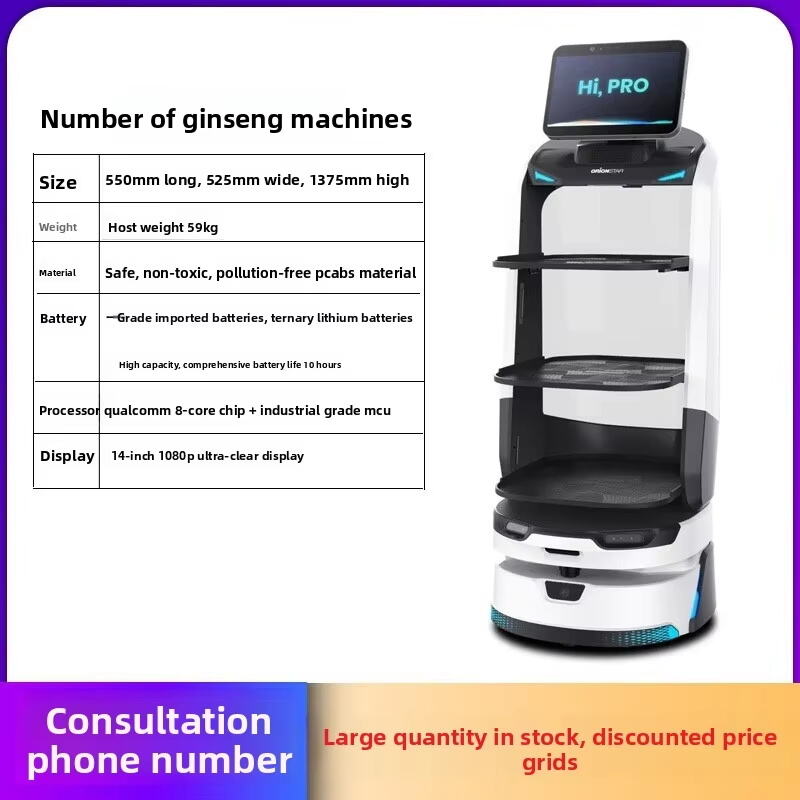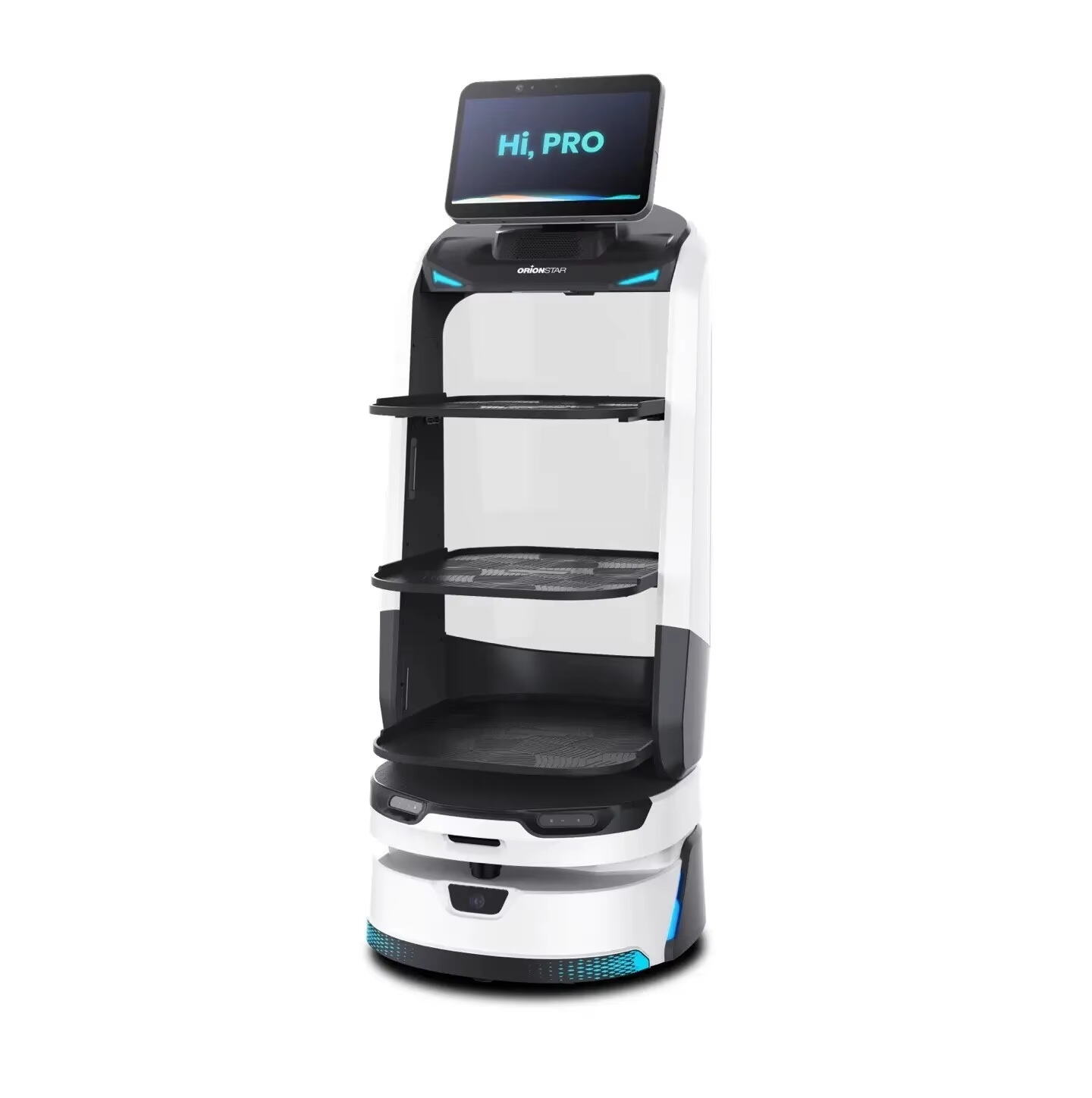The Rise of Automation in Modern Business Operations
In today's rapidly evolving business landscape, commercial robots have become a cornerstone of industrial and operational excellence. These sophisticated machines are transforming how companies approach manufacturing, logistics, customer service, and countless other business functions. The investment in commercial robots represents more than just a trend - it's a strategic imperative for businesses aiming to maintain competitiveness in an increasingly automated world.
From assembly lines to warehouses, commercial robots are proving their worth through enhanced efficiency, reduced operational costs, and improved workplace safety. Companies across various sectors are recognizing that robotic automation isn't just about replacing human workers; it's about augmenting human capabilities and creating new opportunities for growth and innovation.
Strategic Benefits of Commercial Robot Implementation
Operational Efficiency and Productivity Gains
When companies invest in commercial robots, they're essentially investing in operational excellence. These automated systems can work continuously without fatigue, maintaining consistent quality and output levels that human workers simply cannot match. For instance, in manufacturing facilities, commercial robots can perform repetitive tasks with precision accuracy 24/7, leading to significant increases in production capacity.
The efficiency gains extend beyond just speed and consistency. Commercial robots can be programmed to optimize their movements, reducing waste and maximizing resource utilization. This level of precision and efficiency often results in substantial cost savings over time, making the initial investment in robotics technology increasingly attractive to forward-thinking businesses.
Cost Reduction and Resource Optimization
While the upfront investment in commercial robots may seem substantial, the long-term financial benefits often justify the expense. These automated systems can significantly reduce labor costs, minimize errors that lead to waste, and operate with lower ongoing maintenance requirements compared to traditional equipment. Additionally, commercial robots can work in conditions that would be costly or impossible for human workers, such as extreme temperatures or hazardous environments.
The cost benefits also extend to quality control and consistency. By reducing human error and maintaining precise standards, commercial robots help companies avoid expensive recalls, rework, and customer satisfaction issues. This improvement in quality assurance can lead to substantial savings and enhanced brand reputation over time.
Enhanced Safety and Risk Management
Workplace Accident Prevention
Safety considerations are a primary driver for companies investing in commercial robots. These automated systems can handle dangerous tasks that would otherwise put human workers at risk. From handling hazardous materials to working in extreme conditions, commercial robots serve as a crucial tool in workplace safety enhancement.
Modern commercial robots come equipped with advanced safety features and sensors that prevent accidents and ensure smooth cooperation with human workers. This technology has evolved to create collaborative robots, or cobots, that can work alongside humans while maintaining strict safety protocols and emergency shutdown capabilities.
Regulatory Compliance and Risk Reduction
In industries with strict regulatory requirements, commercial robots help ensure consistent compliance with safety standards and operational protocols. These automated systems can be programmed to follow exact procedures, maintain detailed records, and operate within specific parameters, reducing the risk of regulatory violations and associated penalties.
Furthermore, commercial robots help companies manage liability risks by removing human workers from dangerous situations and maintaining consistent operational standards. This risk reduction can lead to lower insurance costs and fewer workplace compensation claims.

Quality Consistency and Product Excellence
Precision Manufacturing and Assembly
Commercial robots excel in maintaining consistent quality standards throughout production processes. Their ability to perform exact movements repeatedly without variation ensures that each product meets precise specifications. This level of consistency is particularly valuable in industries where minor variations can have significant consequences, such as electronics manufacturing or medical device production.
The precision capabilities of commercial robots extend to complex assembly tasks that require multiple steps and careful handling. These machines can maintain quality standards even during long production runs, something that human workers might struggle with due to fatigue or attention lapses.
Quality Control and Inspection
Modern commercial robots are equipped with advanced vision systems and sensors that can detect defects and variations that might be invisible to the human eye. This capability ensures that quality control is maintained at a microscopic level, reducing the likelihood of defective products reaching customers.
The data collection and analysis capabilities of commercial robots also enable companies to track quality metrics in real-time and make immediate adjustments to maintain optimal production standards. This proactive approach to quality control helps prevent costly defects and ensures consistent product excellence.
Future-Proofing Business Operations
Technological Advancement and Adaptability
Investing in commercial robots helps companies stay ahead of technological trends and maintain competitive advantage. These systems can be updated with new software and capabilities as technology evolves, ensuring that businesses remain current with industry advancements without requiring complete system replacement.
The adaptability of modern commercial robots allows companies to quickly respond to changing market demands and production requirements. This flexibility is crucial in today's fast-paced business environment, where the ability to pivot quickly can mean the difference between success and failure.
Data-Driven Decision Making
Commercial robots generate valuable data about operations, performance, and maintenance needs. This information enables companies to make informed decisions about process improvements, predictive maintenance, and resource allocation. The ability to collect and analyze operational data in real-time provides a significant advantage in optimizing business processes and planning for future growth.
The integration of commercial robots with other smart factory technologies creates a connected ecosystem that supports advanced analytics and machine learning capabilities. This technological synergy helps companies identify trends, predict maintenance needs, and optimize operations continuously.
Frequently Asked Questions
What is the typical return on investment for commercial robots?
The ROI for commercial robots varies by industry and application, but many companies report achieving positive returns within 12-24 months of implementation. This includes savings from increased productivity, reduced labor costs, improved quality, and decreased waste. The exact timeframe depends on factors such as initial investment, application complexity, and operational scale.
How do commercial robots impact existing workforce?
Rather than simply replacing workers, commercial robots often lead to workforce evolution. While some routine tasks may be automated, new roles emerge in robot programming, maintenance, and supervision. Many companies find that implementing commercial robots allows them to upskill their workforce and create higher-value positions.
What maintenance requirements do commercial robots have?
Commercial robots require regular preventive maintenance, including software updates, mechanical inspections, and calibration checks. However, these maintenance needs are often predictable and less frequent than traditional equipment. Modern robots also feature self-diagnostic capabilities that can alert technicians to potential issues before they cause downtime.
How long do commercial robots typically last?
With proper maintenance and updates, commercial robots can remain operational for 10-15 years or more. Many systems can be upgraded with new software and end-of-arm tools to extend their useful life and adapt to new applications, making them a long-term investment in business automation.

